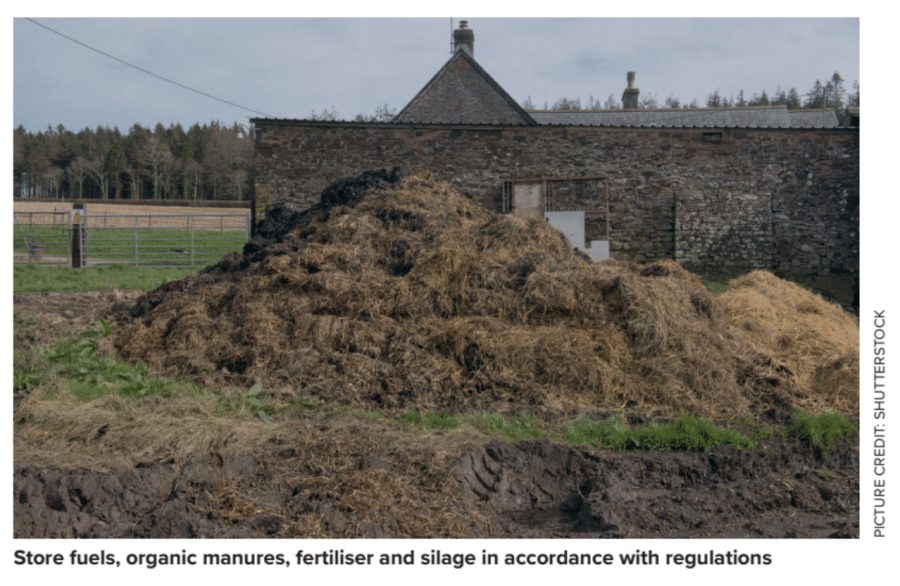John Sones talks to a specialist Environment Agency officer about your environmental responsibilities as a smallholder…
Smallholdings, whether large or small, are by their nature usually areas where farming-related activities are carried out, some of which can cause pollution. I was able to discuss agricultural pollution recently with a specialist agriculture officer at the Environment Agency (EA), who explained the Agency’s role as one of the farming regulators in England. We discussed how EA advice-led farm inspections are targeted, what these regulatory farm inspections cover and the common pitfalls. Smallholders need to be able to be mindful of their responsibilities as land managers and run their holdings appropriately. Some forms of agricultural pollution are obvious, such as manure heaps leaching effluent into water courses, or poor storage of silage. Less obviously, agriculture as an industry (which including smallholdings) contributes 87% of total ammonia emissions in the UK, as of 2022.The EA can instigate an inspection of any smallholding or farm, regardless of the acreage or complexity of the holding.
UNDERSTANDING YOUR PART IN ENVIRONMENTAL REQUIREMENTS
It is very important that smallholders understand the environmental and conservation restrictions that may apply to their holding. These include NitrateVulnerable Zones (NVZs), which are areas designated as being at risk from agricultural nitrate pollution (about 55%of England according to the Government website). If your holding is located in anNVZ, you must follow rules regarding storage and use of nitrogen fertiliser and/or organic manures. You must be aware of what (if any) watercourses, springs, wells or boreholes lie on your holding– these are vulnerable to pollution. Do check if your holding is located in aSource Protection Zone (SPZs), these being the areas of highest susceptibility to groundwater pollution.Your holding may be all or just partly in one of these areas. The EA recommends you check the constraints that may apply to your smallholding, by using DEFRA’s Magic mapping website. This displays a wide variety of statutory and non-statutory designations/restrictions.Some smallholders may feel that they will never be inspected by the EA, as they are not in any schemes and the area they manage is small. However, the EA has significantly increased the number of inspections that it makes annually across England.
SO WHAT ARE THE DRIVERS OF EA INSPECTIONS AND WHO CARRIES THESE OUT?
Given that resources are limited, inspections are normally focused in river catchments particularly affected by nitrate and/or phosphate accumulation. The EA also considers environmental risk of activities and locations of specific farming and smallholding practices. Stocking densities of cattle and/or pigs can be a factor. The number of EA inspections has increased significantly over the past two years. If a smallholding lies partly or wholly in high-priority area, the chance of an inspection is greater. The EA will have completed over 4,000 farm inspections in England in the year to March 2024. The EA’s inspectors have been appointed because of their relevant experience in agriculture and they usually work only in agricultural regulation and enforcement. These officers have a familiarity with smallholdings and farms, and typically take an advice-led approach to these regulatory inspections. The overarching objective is to bring non-compliant holdings in to compliance with regulation, to reduce agricultural diffuse pollution.Unfortunately, nearly 50% of the holdings inspected in 2023-24 were assessed as non-compliant with agricultural regulation. Common remedial actions including making improvements to separation of clean and dirty water, rectifying non-compliant storage of manures and silage, carrying out soil sampling and maintaining accurate farm records.
This article extract was taken from the May 2024 edition of The Country Smallholder. To read on, you can buy the issue here.
To receive regular copies of The Country Smallholder magazine featuring more articles like this, subscribe here.
For FREE updates from the world of smallholding, sign up for The Country Smallholder newsletter here.








